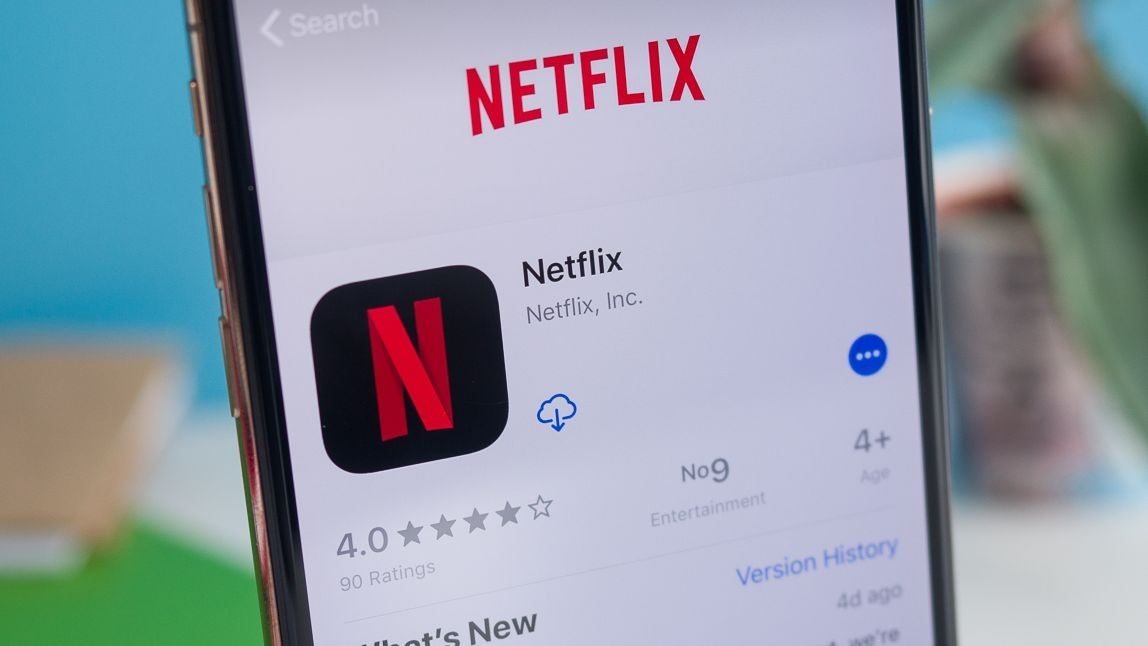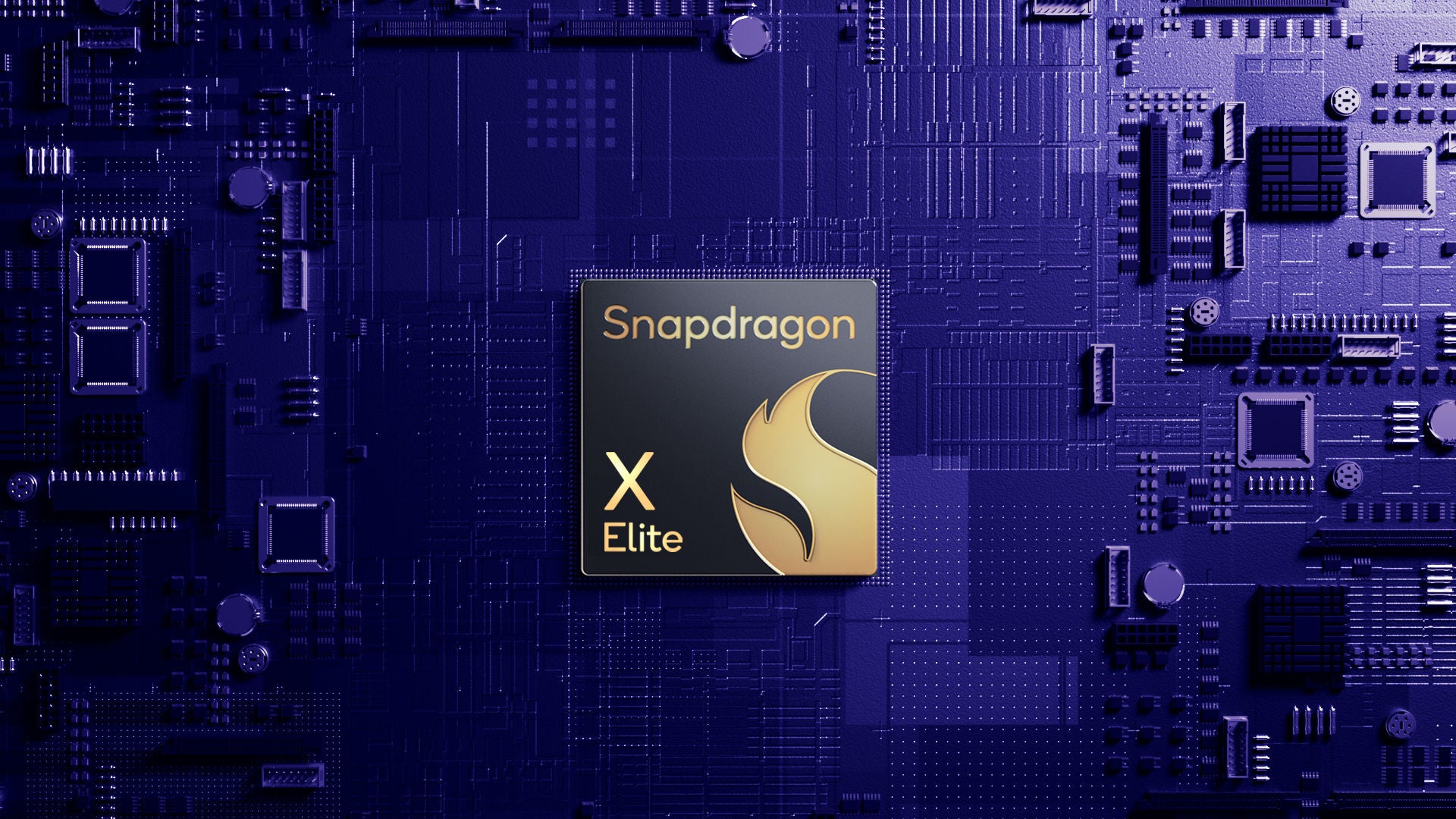Open Source Revenue Generation: Balancing Community and Commerce – A Comprehensive Guide
Abstract This post provides an in‐depth look at open source revenue generation models that balance community-driven development with commercial interests. We discuss historical context, core concepts such as donations, corporate sponsorship, SaaS, dual licensing, consulting, and merchandising, and explore practical examples ranging from WordPress and GitLab to emerging NFT and blockchain-based projects. We also discuss the challenges and future trends such as blockchain integration and evolving legal frameworks. This guide is optimized for both developers and business stakeholders, blending technical insights with accessible language. Introduction Open source software has reshaped the technology landscape by promoting collaboration and innovation. However, sustaining these projects financially remains a pressing challenge. Funding methods must respect the community ethos while ensuring sustained development and commercialization where necessary. By innovating funding strategies and blending community-driven approaches with modern financial models, projects can remain both accessible and commercially viable. In this post, we explore strategies such as donations, corporate sponsorships, Software as a Service (SaaS), dual licensing, consulting & support, and merchandising. We will also integrate cutting-edge funding approaches using blockchain and NFTs. Key topics include: The history and background of open source revenue models Detailed core concepts and overlapping features Practical examples and case studies Challenges, future trends, and innovations Resources and additional reading to further understand these models By examining these topics, readers will gain insights into how open source communities can remain sustainable while preserving the openness and collaborative spirit that drives innovation. Background and Context The open source movement began with a belief that software should be free, accessible, and developed collaboratively. Pioneering projects like Linux and Apache demonstrated that community collaboration could produce world-class technologies. Over time, the need for financial sustainability became apparent. Volunteer contributions, while essential, could not fully support the continuous evolution required for large-scale projects. The ecosystem evolved with the introduction of various revenue models. Traditional strategies like donations have been complemented by corporate sponsorships, which bring long-term funding from companies who depend on open source software. SaaS and hosting models allow tech companies to offer managed services based on open source technology. Dual licensing offers both free and premium versions, meeting the needs of both community users and enterprise clients. For a deeper exploration of these methods, see the Open Source Revenue Generation article. Historically, as open source projects matured, so did the funding models: Donations and Crowdfunding: Platforms like Donations for Open Source Projects enabled grassroots funding. Corporate Sponsorship: Initiatives like GitHub Sponsors connect corporate interests with community developers. SaaS & Hosting: Projects such as WordPress exemplify managed hosting, providing convenience for users. Dual Licensing: This strategy caters to both free community use and enhanced commercial needs via a paid license (Dual Licensing Approach). These models now coexist with emerging trends in blockchain, non-fungible tokens (NFTs), and innovative licensing, generating alternative revenue streams while preserving open collaboration. Core Concepts and Features Open source revenue generation involves several key concepts that allow projects to remain viable without compromising community values. Below we detail the essential components: 1. Donations and Crowdfunding Donations have long provided a direct source of income for open source projects. They allow community members to support results they find valuable. Crowdfunding campaigns on platforms like Patreon and Kickstarter help raise funds for specific development milestones or security audits. Key Features: Community Engagement: Projects foster a sense of ownership among supporters. Transparency: Donation channels provide clear records that build trust. Recurring Revenue: Regular contributions via monthly subscriptions create stable income. For further insights, refer to Donations for Open Source Projects. 2. Corporate Sponsorships and Partnerships Many corporations now see the strategic value in supporting open source projects. Sponsorship models create a win-win scenario where companies receive improved and secure software while projects gain reliable funding and broader reach. Key Features: Stable Funding: Long-term sponsorships ensure continuous support. Strategic Collaboration: Joint contributions drive mutual growth and technological innovation. Enhanced Credibility: Associat
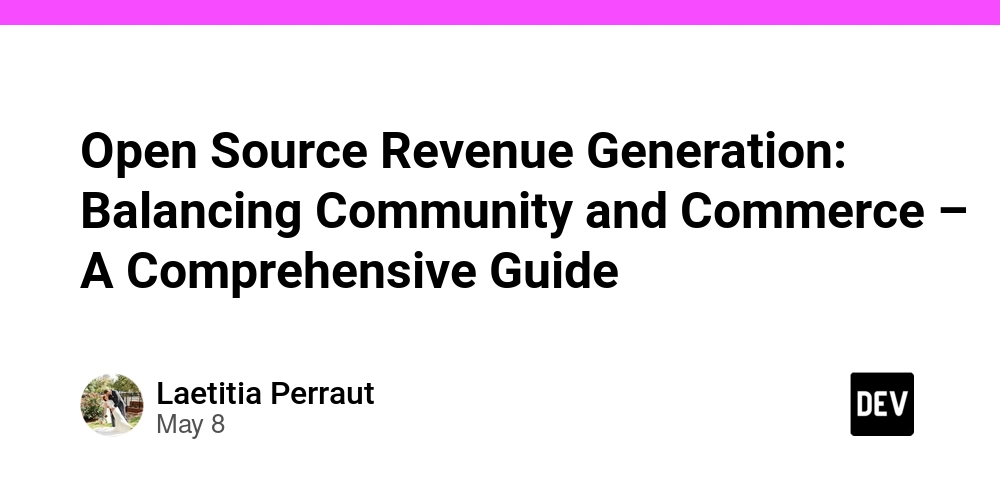
Abstract
This post provides an in‐depth look at open source revenue generation models that balance community-driven development with commercial interests. We discuss historical context, core concepts such as donations, corporate sponsorship, SaaS, dual licensing, consulting, and merchandising, and explore practical examples ranging from WordPress and GitLab to emerging NFT and blockchain-based projects. We also discuss the challenges and future trends such as blockchain integration and evolving legal frameworks. This guide is optimized for both developers and business stakeholders, blending technical insights with accessible language.
Introduction
Open source software has reshaped the technology landscape by promoting collaboration and innovation. However, sustaining these projects financially remains a pressing challenge. Funding methods must respect the community ethos while ensuring sustained development and commercialization where necessary. By innovating funding strategies and blending community-driven approaches with modern financial models, projects can remain both accessible and commercially viable.
In this post, we explore strategies such as donations, corporate sponsorships, Software as a Service (SaaS), dual licensing, consulting & support, and merchandising. We will also integrate cutting-edge funding approaches using blockchain and NFTs. Key topics include:
- The history and background of open source revenue models
- Detailed core concepts and overlapping features
- Practical examples and case studies
- Challenges, future trends, and innovations
- Resources and additional reading to further understand these models
By examining these topics, readers will gain insights into how open source communities can remain sustainable while preserving the openness and collaborative spirit that drives innovation.
Background and Context
The open source movement began with a belief that software should be free, accessible, and developed collaboratively. Pioneering projects like Linux and Apache demonstrated that community collaboration could produce world-class technologies. Over time, the need for financial sustainability became apparent. Volunteer contributions, while essential, could not fully support the continuous evolution required for large-scale projects.
The ecosystem evolved with the introduction of various revenue models. Traditional strategies like donations have been complemented by corporate sponsorships, which bring long-term funding from companies who depend on open source software. SaaS and hosting models allow tech companies to offer managed services based on open source technology. Dual licensing offers both free and premium versions, meeting the needs of both community users and enterprise clients.
For a deeper exploration of these methods, see the Open Source Revenue Generation article.
Historically, as open source projects matured, so did the funding models:
- Donations and Crowdfunding: Platforms like Donations for Open Source Projects enabled grassroots funding.
- Corporate Sponsorship: Initiatives like GitHub Sponsors connect corporate interests with community developers.
- SaaS & Hosting: Projects such as WordPress exemplify managed hosting, providing convenience for users.
- Dual Licensing: This strategy caters to both free community use and enhanced commercial needs via a paid license (Dual Licensing Approach).
These models now coexist with emerging trends in blockchain, non-fungible tokens (NFTs), and innovative licensing, generating alternative revenue streams while preserving open collaboration.
Core Concepts and Features
Open source revenue generation involves several key concepts that allow projects to remain viable without compromising community values. Below we detail the essential components:
1. Donations and Crowdfunding
Donations have long provided a direct source of income for open source projects. They allow community members to support results they find valuable. Crowdfunding campaigns on platforms like Patreon and Kickstarter help raise funds for specific development milestones or security audits.
Key Features:
- Community Engagement: Projects foster a sense of ownership among supporters.
- Transparency: Donation channels provide clear records that build trust.
- Recurring Revenue: Regular contributions via monthly subscriptions create stable income.
For further insights, refer to Donations for Open Source Projects.
2. Corporate Sponsorships and Partnerships
Many corporations now see the strategic value in supporting open source projects. Sponsorship models create a win-win scenario where companies receive improved and secure software while projects gain reliable funding and broader reach.
Key Features:
- Stable Funding: Long-term sponsorships ensure continuous support.
- Strategic Collaboration: Joint contributions drive mutual growth and technological innovation.
- Enhanced Credibility: Association with established companies can attract more users and contributors.
A further discussion on corporate sponsorship is available in resources such as Corporate Sponsorship Models.
3. SaaS and Hosted Solutions
Providing hosted versions of open source projects allows users to enjoy the benefits of open source without managing the technical intricacies themselves. Managed services can range from basic hosting to enterprise-grade support and advanced features.
Key Features:
- Convenience: Simple deployment through managed hosting services.
- Scalability: Solutions cater to the needs of small startups as well as large enterprises.
- Value-Added Services: Additional features like enhanced security, performance optimizations, and backups become part of the premium package.
WordPress.com is a prime example of this model. Visit WordPress.com for more details.
4. Dual Licensing
Dual licensing offers an elegant blend between free and commercial interests. Open source software is available under a permissive license for community use, while a commercial license is provided for enterprises that need proprietary features or additional support.
Key Features:
- Flexibility and Choice: Users can opt for the version that best fits their needs.
- Legal Clarity: Commercial licenses are accompanied by extra warranties and support.
- Market Expansion: Opens revenue channels from industries requiring strict compliance and customization.
Learn more about this approach by checking the Dual Licensing Approach.
5. Consulting, Support, and Sponsored Development
Beyond the software itself, many projects generate revenue by offering consulting and technical support services. Companies like Red Hat have successfully monetized their expertise by providing tailored support services, ensuring that open source projects are well-maintained and adaptable.
Key Features:
- Expert Assistance: Tailored consulting services help organizations maximize the value of the software.
- Customization: Sponsored development projects can address specific client needs.
- Diversified Income: These services add another layer of revenue stream, mitigating risks associated with a single funding model.
6. Merchandising and Digital Goods
Though often secondary to other income channels, merchandising strengthens community identity and can yield supplementary revenue. Branded merchandise like T-shirts, stickers, and ebooks not only support the project financially but also promote its visibility.
Key Features:
- Brand Building: Merchandise reinforces community identity and loyalty.
- Fan Engagement: Fans and contributors become brand ambassadors by purchasing official merchandise.
- Extra Revenue: Even modest income supplements overall financial stability.
Overlapping Features and Synergies
Many successful projects combine multiple revenue streams to ensure resilience. For example, a community might secure both grassroots donations and corporate sponsorships, while also offering hosted SaaS solutions and dual licensing. This hybrid model cushions against fluctuations in any single revenue source.
Below is a table summarizing the revenue models and key characteristics:
| Revenue Model | Key Characteristics | Examples |
|---|---|---|
| Donations & Crowdfunding | Community driven, transparent and recurring contributions | OpenSSL, VLC Media Player |
| Corporate Sponsorship | Long-term funding, strategic partnerships, enhanced credibility | GitHub Sponsors, Red Hat |
| SaaS & Hosted Solutions | Convenience, scalability, value-added premium services | WordPress.com, MongoDB Atlas |
| Dual Licensing | Dual offerings (free and commercial), legal clarity | Qt, MySQL |
| Consulting & Support | Expert services, bespoke development | Red Hat, GitLab |
| Merchandising & Digital Goods | Brand reinforcement, fan engagement, supplementary income | Kubernetes (CNCF store) |
Additionally, a bullet list of the core benefits of integrating diverse revenue models includes:
- Increased Financial Stability
- Enhanced Community Engagement
- Broader Market Reach
- Flexibility to Adapt to Market Changes
- Resilience Against Economic Fluctuations
Applications and Use Cases
These revenue models are not merely theoretical but have real-world applications across various sectors. Below, we examine three practical examples that highlight their impact on both established and emerging technologies.
Case Study 1: The WordPress Ecosystem
WordPress stands as a classic example of open source ingenuity. While the core platform remains free and community-driven, WordPress leverages SaaS hosting, premium themes, and plugin marketplaces to secure funding and foster a commercial ecosystem.
Practical Highlights:
- Managed Hosting: Services like WordPress.com allow users to bypass technical hurdles.
- Premium Add-Ons: Themes and plugins create opportunities for monetization.
- Corporate Consulting: Larger business clients receive tailored support, further reinforcing the revenue base.
Case Study 2: GitLab and Open Source Sponsorship
GitLab adopts an "open core" model, offering basic functionality for free while providing advanced features and technical support under corporate sponsorship arrangements.
Practical Highlights:
- Hybrid Licensing: Balancing free community contributions with revenue-driven enterprise editions.
- Corporate Sponsorship: Enhanced product offerings attract sponsorships and dedicated support, leading to financial stability.
- Community Contribution: Continual improvements driven by community members and corporate funding alike.
For further reading on sponsorship benefits, check out Unlocking the Potential of GitHub Sponsors for Developers.
Case Study 3: NFT and Blockchain-Integrated Projects
The convergence of open source with blockchain technologies has opened new avenues for revenue generation. Projects incorporating NFTs for funding not only embrace traditional models such as dual licensing but also use tokenization to create collectible digital assets.
Practical Highlights:
- Dual Licensing with Tokenization: Software is offered under free and paid licenses, with verified digital tokens ensuring authenticity.
- Innovative Asset Monetization: Digital art and NFTs add a new revenue layer by tapping into the growing collector’s market.
- Community and Corporate Funding: Projects benefit from both grassroots donations and strategic investments from established companies.
Explore the exciting intersection of blockchain and open source funding at Opulus NFT Collection.
Challenges and Limitations
While these strategies can empower open source projects, they also raise several challenges:
Balancing Free Access and Commercial Interests:
As projects introduce commercial elements, maintaining community trust is critical. Transparency about licensing and revenue sources must be prioritized to avoid alienating volunteers and contributors.Market Competition:
With many alternatives available for free, monetized features must offer distinct advantages in security, scalability, or additional support to justify their cost.Technical and Operational Overheads:
Managing SaaS solutions requires significant infrastructure and continuous technical updates. Projects relying mainly on donations might face variability in funding that affects long-term planning.Legal and Licensing Complexities:
Dual licensing and commercial contracts necessitate clear and thorough legal reviews. Misunderstandings or non-compliance with licensing regulations can result in disputes, which may harm the project’s reputation.Adoption Barriers:
Transitioning users from a completely free model to one that offers paid enhancements may meet resistance. It is crucial that the benefits of paying for additional services are clear to potential users.
A bullet list summarizing these challenges:
- Transparency in Funding
- High Operational Costs
- Legal Risks and Licensing Complexities
- User Resistance to Paid Features
- Increased Competition from Free Alternatives
For an in-depth look at financial planning challenges within open source projects, read Open Source Project Financial Planning: A Key to Sustainability.
Future Outlook and Innovations
The landscape of open source revenue generation continues to evolve – here are some trends and innovations to watch:
Increased Blockchain Integration and NFT Adoption
Blockchain technologies provide unprecedented transparency and security in monetary transactions. Tokenization through NFTs introduces new ways for projects to generate revenue while ensuring digital ownership and authenticity. As projects merge traditional models with blockchain innovation, we expect to see:
- Secure, Transparent Funding Channels
- Decentralized Sponsorship and Crowdfunding Models
- Innovative Asset Monetization Techniques
Expansion of Hybrid SaaS Models
Hosted solutions and dual licensing models will likely continue to evolve into hybrid offerings. This evolution includes:
- Enhanced Automation and Security Technologies
- Hybrid Cloud-Based Services that cater to both individual developers and large enterprises, ensuring project scalability.
- Integration with Data-Driven Insights to customize premium offerings based on market demands.
Greater Corporate and Institutional Involvement
The ongoing success of sponsorship initiatives demonstrates a growing interest from corporations in supporting open source. This trend not only bolsters projects financially but also drives technological innovation through shared research and development initiatives.
Advancements in Legal Frameworks
As dual licensing models mature, we anticipate improvements in legal frameworks. Standardized contract templates and comprehensive legal support will reduce the friction in adopting mixed revenue models.
Community-Driven Innovations
Open source communities remain at the forefront of innovation. Future platforms will likely incorporate advanced collaboration tools to streamline contributions and match funding opportunities to development needs. This innovation could include enhanced crowdfunding mechanisms and improved tracking of sponsorship funds.
For further perspectives on the intersection of blockchain and open source, see Exploring Blockchain for Open Source Funding: A New Paradigm.
Summary
In summary, sustaining open source projects requires a careful balance between community-driven ideals and commercial income generation. Funding models ranging from donations and corporate sponsorships to SaaS, dual licensing, and consulting services each contribute uniquely to a project’s long-term viability. Success stories from platforms like WordPress and GitLab to innovative blockchain-integrated projects show that integrating multiple revenue streams not only fortifies financial stability but also honors the spirit of open collaboration.
Key takeaways include:
- Diverse Revenue Streams: Combining donations, sponsorships, hosted solutions, and dual licensing creates a resilient funding model.
- Transparency and Community Engagement: Maintaining open communication about funding strategies builds trust and ensures community support.
- Innovation Drives Sustainability: Embracing new technologies like blockchain not only safeguards funding channels but also opens up creative asset monetization pathways.
- Legal and Operational Preparedness: Effective legal frameworks and robust technical infrastructures are crucial for long-term success.
For further insights on sustaining innovation through funding, check out The Power of Sponsoring Open Source Projects.
Additional Resources and References
For readers wishing to delve deeper into open source funding strategies, here are some valuable resources and additional reading links:
- Open Source Revenue Generation: Balancing Community and Commerce
- Donations for Open Source Projects
- Dual Licensing Approach
- GitHub Sponsors
- Opulus NFT Collection
Also, check out some insightful articles on Dev.to:
- Unlocking the Potential of GitHub Sponsors for Developers
- The Power of Sponsoring Open Source Projects
- Open Source Project Financial Planning: A Key to Sustainability
By embracing these diverse funding models and next-generation innovations, open source projects can continue to drive technological advancement while remaining true to their collaborative roots.
In conclusion, the open source movement is not just about free code—it is about creating a self-sustaining ecosystem where community, commerce, and creativity thrive together. Through effective blending of multiple revenue streams, strategic partnerships, and the integration of new technologies like blockchain, open source projects are set to flourish well into the future.








































































































































































![[The AI Show Episode 146]: Rise of “AI-First” Companies, AI Job Disruption, GPT-4o Update Gets Rolled Back, How Big Consulting Firms Use AI, and Meta AI App](https://www.marketingaiinstitute.com/hubfs/ep%20146%20cover.png)










































































































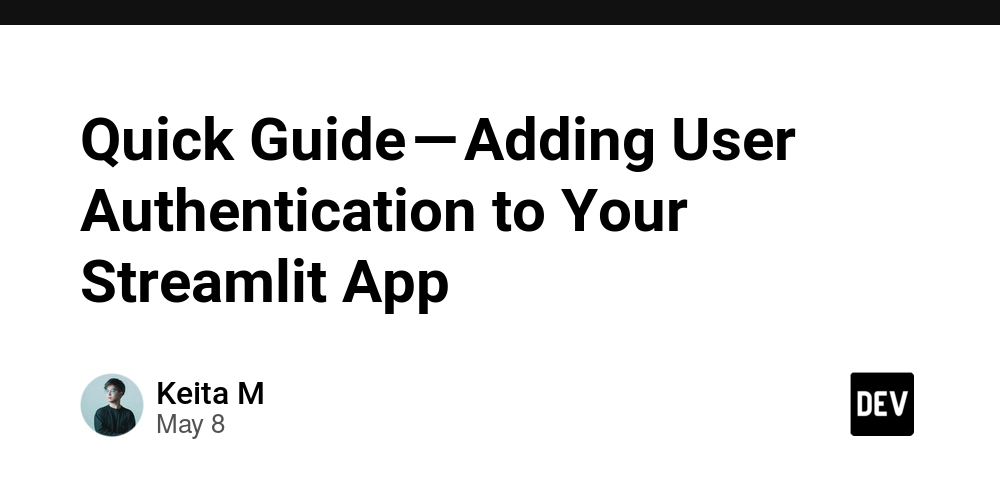
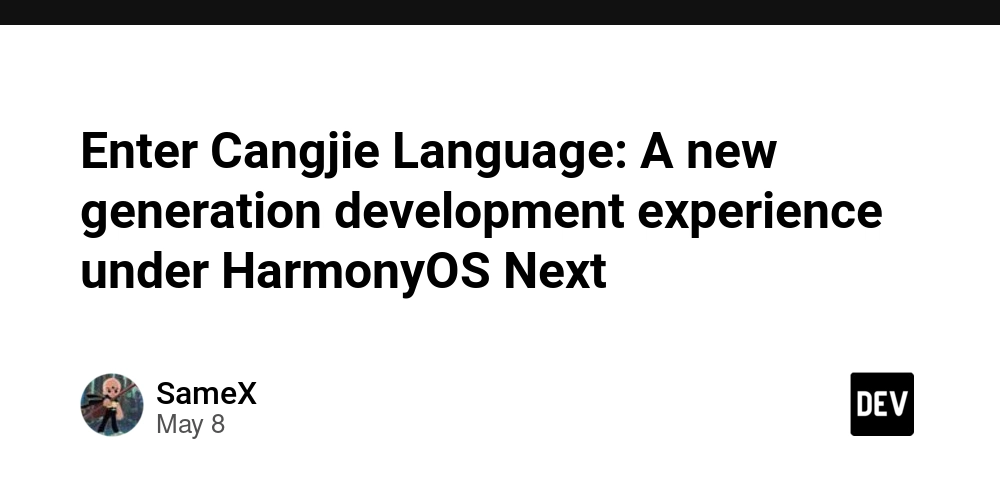





























































































































































































































































![Honor 400 series officially launching on May 22 as design is revealed [Video]](https://i0.wp.com/9to5google.com/wp-content/uploads/sites/4/2025/05/honor-400-series-announcement-1.png?resize=1200%2C628&quality=82&strip=all&ssl=1)














![Beats Studio Pro Wireless Headphones Now Just $169.95 - Save 51%! [Deal]](https://www.iclarified.com/images/news/97258/97258/97258-640.jpg)















































